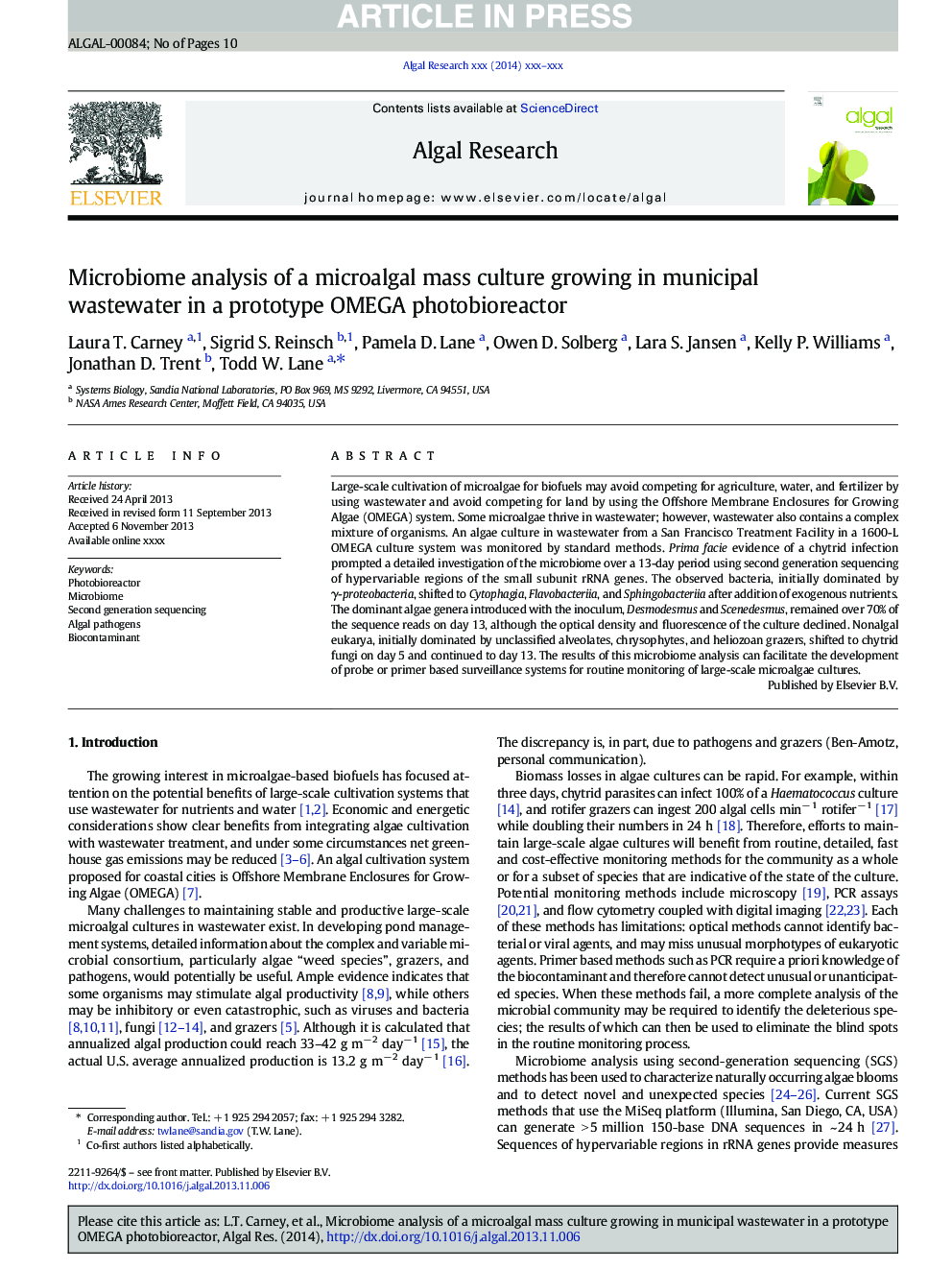| Article ID | Journal | Published Year | Pages | File Type |
|---|---|---|---|---|
| 8088464 | Algal Research | 2014 | 10 Pages |
Abstract
Large-scale cultivation of microalgae for biofuels may avoid competing for agriculture, water, and fertilizer by using wastewater and avoid competing for land by using the Offshore Membrane Enclosures for Growing Algae (OMEGA) system. Some microalgae thrive in wastewater; however, wastewater also contains a complex mixture of organisms. An algae culture in wastewater from a San Francisco Treatment Facility in a 1600-L OMEGA culture system was monitored by standard methods. Prima facie evidence of a chytrid infection prompted a detailed investigation of the microbiome over a 13-day period using second generation sequencing of hypervariable regions of the small subunit rRNA genes. The observed bacteria, initially dominated by γ-proteobacteria, shifted to Cytophagia, Flavobacteriia, and Sphingobacteriia after addition of exogenous nutrients. The dominant algae genera introduced with the inoculum, Desmodesmus and Scenedesmus, remained over 70% of the sequence reads on day 13, although the optical density and fluorescence of the culture declined. Nonalgal eukarya, initially dominated by unclassified alveolates, chrysophytes, and heliozoan grazers, shifted to chytrid fungi on day 5 and continued to day 13. The results of this microbiome analysis can facilitate the development of probe or primer based surveillance systems for routine monitoring of large-scale microalgae cultures.
Related Topics
Physical Sciences and Engineering
Energy
Renewable Energy, Sustainability and the Environment
Authors
Laura T. Carney, Sigrid S. Reinsch, Pamela D. Lane, Owen D. Solberg, Lara S. Jansen, Kelly P. Williams, Jonathan D. Trent, Todd W. Lane,
